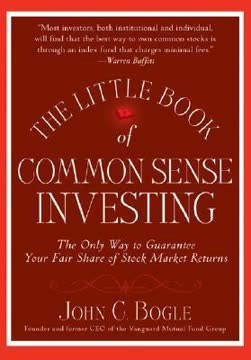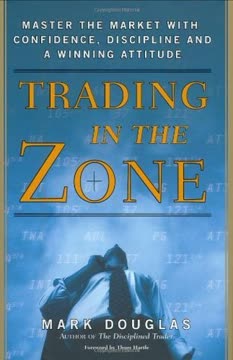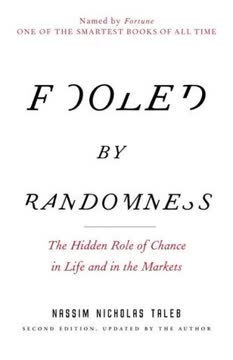重点摘要
1. 财务教育是新经济中的不公平优势
“金钱不会让我们富有。知识才会。”
新经济现实: 自1971年美国美元脱离金本位以来,世界发生了巨大的变化。金钱不再是金钱,而是债务。这一转变创造了一个新的经济格局,其中:
- 储蓄者因通货膨胀和货币贬值而成为输家
- 传统的财务建议已经过时且可能有害
- 富人和穷人之间的差距迅速扩大
财务教育的力量: 要在这种新经济中茁壮成长,必须投资于财务教育。这包括理解:
- 现金流象限(雇员、自雇者、企业主、投资者)
- 资产与负债的区别
- 如何产生被动收入和现金流
- 有利于富人的税收策略
通过获得这些知识,个人可以在复杂的金融世界中导航,做出明智的决策,并在任何经济条件下创造财富。
2. 税收偏爱企业家和投资者而非雇员
“你为钱工作得越努力,你缴的税就越多。”
税收系统结构: 税法旨在激励有利于经济的某些行为。这个系统偏爱:
- 企业主(B象限)
- 投资者(I象限)
而非:
- 雇员(E象限)
- 自雇者(S象限)
主要税收优势: 企业家和投资者可以受益于:
- 被动和投资组合收入的较低税率
- 通过各种策略延迟纳税的能力
- 业务活动的众多扣除和抵免
- 使用债务作为杠杆的同时享受税收优惠
要利用这些优势,个人必须将重点从赚取高薪转移到建立企业和获取产生收入的资产。这需要改变心态和财务教育,以理解和实施税收高效的策略。
3. 利用债务获取资产并积累财富
“当一个人知道如何用无中生有的钱或别人的钱或银行的钱赚钱时,他们进入了一个不同的世界。”
好债务与坏债务: 并非所有债务都是一样的。关键是战略性地使用债务:
- 好债务:用于获取产生收入的资产
- 坏债务:用于购买负债或消耗品
利用债务积累财富: 成功的投资者使用债务来:
- 获取产生收入的资产(如出租物业)
- 通过杠杆增加投资回报
- 利用某些类型债务的税收优惠
示例策略: 使用债务购买出租物业,让租户偿还抵押贷款,并受益于:
- 物业价值的升值
- 租金带来的月现金流
- 抵押贷款利息和折旧的税收扣除
通过掌握债务的使用,投资者可以加速财富积累,比仅依靠储蓄或完全避免债务的人更快实现财务自由。
4. 通过财务知识和控制降低风险
“投资并不冒险。缺乏财务教育才是非常冒险的。”
重新定义风险: 许多人认为投资本质上是有风险的。然而,风险往往是由于:
- 缺乏知识
- 缺乏控制
- 决策不当
降低风险的策略:
- 投资于财务教育以了解各种资产类别
- 发展市场和投资分析技能
- 学习使用金融工具进行对冲和保护
- 专注于现金流而非资本增值
- 在不同资产类别中分散投资,而不仅仅是在一个类别中(如股票)
控制与分散: 传统建议强调通过分散投资来降低风险。然而,真正的风险降低来自于通过知识和技能增加控制。通过成为特定投资领域的专家,你可以做出明智的决策,更有效地应对市场波动。
5. 为资产和现金流工作,而不是为钱工作
“富人不为钱工作。”
范式转变: 与其为薪水工作,不如专注于获取产生持续现金流的资产。这种方法导致:
- 财务自由
- 减少税收负担
- 能够应对经济衰退
追求的收入类型:
- 被动收入(如租金收入、版税)
- 投资组合收入(如股息、资本增值)
- 剩余收入(如网络营销、在线业务)
建立资产栏: 系统地获取产生现金流的资产,如:
- 出租物业
- 支付股息的股票
- 具有经常性收入模式的企业
- 知识产权(专利、版权)
通过专注于建立资产栏而不仅仅是赚取高薪,个人可以创造持久的财富并实现财务独立。
6. 发展商业、房地产和技术投资技能
“你在B和I象限学到的越多,你赚的就越多。随着时间的推移,你的教育复利增长,你的回报也会复利增长。”
财富创造的基本技能:
-
商业/创业:
- 销售和市场营销
- 团队建设和领导力
- 系统开发
- 财务管理
-
房地产:
- 物业分析和估值
- 融资策略
- 物业管理
- 市场趋势分析
-
技术投资:
- 图表阅读和技术分析
- 理解市场周期
- 风险管理技术
- 使用衍生品和其他金融工具
持续学习: 通过以下方式承诺在这些领域进行持续教育:
- 研讨会和工作坊
- 导师计划
- 实际经验和实践
- 与成功的投资者和企业家建立网络
通过在这些关键领域发展专业知识,个人可以识别机会,做出明智的决策,并在各种资产类别中最大化回报。
7. 成为5级资本家投资者以获得最大回报
“无限回报意味着:无中生有。”
五级投资者:
- 零财务智商
- 储蓄者是输家
- 我太忙了
- 我是专业人士
- 资本家
5级资本家投资者的特征:
- 使用别人的钱(OPM)进行投资
- 专注于创造和获取资产
- 理解并利用税收优势
- 追求无限回报(收回初始投资的同时保留所有权)
- 在B(商业)和I(投资者)象限中运作
成为5级投资者的步骤:
- 建立坚实的财务教育基础
- 作为4级专业投资者积累经验
- 建立专家团队(法律、税务、金融)
- 创建或获取产生现金流的企业
- 使用杠杆和OPM扩大投资
- 不断寻找降低风险和最大化回报的方法
通过努力成为5级资本家投资者,个人可以实现最高水平的财富和财务自由,通常只需承担最小的个人资本风险。
最后更新日期:
FAQ
What's Unfair Advantage by Robert T. Kiyosaki about?
- Focus on Financial Education: The book emphasizes the importance of financial education as a means to gain an unfair advantage in wealth creation.
- Critique of Traditional Education: Kiyosaki argues that traditional education does not prepare individuals for financial success in the modern economy.
- Economic Transition: It discusses the shift from the Industrial Age to the Information Age, highlighting the obsolescence of job security and traditional savings methods.
- Real-Life Investments: Kiyosaki shares personal experiences and strategies for investing in real estate and understanding the rules of money today.
Why should I read Unfair Advantage by Robert T. Kiyosaki?
- Gain Financial Insights: The book provides insights into financial education often overlooked in traditional schooling.
- Empowerment Through Knowledge: It empowers readers to take control of their financial future by emphasizing proactive learning.
- Learn from Real Experiences: Kiyosaki shares his journey and lessons from successes and failures, making the content relatable.
- Prepare for Economic Changes: The book prepares readers for expected economic volatility, encouraging proactive financial strategies.
What are the key takeaways of Unfair Advantage by Robert T. Kiyosaki?
- Financial Education is Crucial: Kiyosaki stresses that financial literacy is essential for navigating modern finance complexities.
- Use Debt Wisely: The book teaches leveraging debt as a tool for acquiring assets and generating cash flow.
- Question Traditional Advice: Kiyosaki encourages challenging conventional wisdom about saving, investing, and job security.
- Understanding Assets vs. Liabilities: Distinguishing between assets and liabilities is fundamental to building wealth.
What are the best quotes from Unfair Advantage by Robert T. Kiyosaki and what do they mean?
- “Savers are losers.”: This highlights the belief that saving money in a depreciating currency is detrimental to wealth accumulation.
- “Choose your teachers wisely.”: Emphasizes learning from those with real-world financial success rather than traditional educators.
- “The harder you work for money, the more you pay in taxes.”: Suggests that financial education can help minimize tax burdens.
How does Unfair Advantage by Robert T. Kiyosaki define assets and liabilities?
- Assets Put Money In: Assets are defined as anything that puts money in your pocket, like rental properties or investments.
- Liabilities Take Money Out: Liabilities are things that take money out of your pocket, such as a personal residence or car.
- Importance of Financial Literacy: Understanding the difference is crucial for building wealth, as many mistakenly consider their homes as assets.
What is the CASHFLOW Quadrant in Unfair Advantage by Robert T. Kiyosaki?
- Four Types of Income: The quadrant categorizes individuals into Employees (E), Self-Employed (S), Business Owners (B), and Investors (I).
- Focus on B and I: Kiyosaki argues for operating in the B and I quadrants for financial freedom through business ownership and investments.
- Understanding Cash Flow: It helps individuals understand income sources and how to shift towards more favorable financial positions.
How does Unfair Advantage by Robert T. Kiyosaki address the concept of inflation?
- Inflation Diminishes Savings: Kiyosaki argues that inflation erodes money's purchasing power, making saving ineffective long-term.
- Invest in Tangible Assets: He suggests investing in real estate, gold, and silver to combat inflation, as they retain value over time.
- Understanding Money Dynamics: The book encourages understanding how government policies and economic conditions affect inflation and finances.
What is the significance of debt in Unfair Advantage by Robert T. Kiyosaki?
- Debt as a Tool: Kiyosaki views debt as a necessary tool for wealth creation, allowing leverage of other people's money to acquire assets.
- Tax Advantages: Using debt can provide tax benefits, as interest payments on loans can often be deducted from taxable income.
- Risk Management: While beneficial, Kiyosaki emphasizes managing debt wisely to avoid financial pitfalls.
What strategies does Unfair Advantage by Robert T. Kiyosaki suggest for investing?
- Start Small and Learn: Kiyosaki advises starting with small investments to gain experience before moving to larger deals.
- Focus on Cash Flow: Emphasizes investing for cash flow rather than capital gains, as cash flow provides ongoing income.
- Continuous Education: Stresses the need for ongoing financial education to adapt to changing market conditions.
How does Unfair Advantage by Robert T. Kiyosaki suggest one should approach financial education?
- Invest Time in Learning: Encourages prioritizing financial education through courses, books, and mentorship from successful investors.
- Question Traditional Education: Challenges the conventional education system for failing to teach practical financial skills.
- Adopt a Growth Mindset: Promotes continuous learning and adaptation, essential for navigating modern finance complexities.
What are the Five Levels of Investors in Unfair Advantage by Robert T. Kiyosaki?
- Investor Levels Explained: Kiyosaki outlines five levels, from zero financial intelligence to seasoned capitalists.
- Path to Improvement: The levels serve as a framework for assessing investment knowledge and identifying growth areas.
- Importance of Education: Highlights the significance of continuous learning and adaptation in the investment landscape.
How can I apply the concepts from Unfair Advantage by Robert T. Kiyosaki to my life?
- Start with Financial Education: Invest in financial education through books, courses, and practical experiences.
- Assess Your Financial Position: Use the CASHFLOW Quadrant to evaluate your income generation and identify improvement areas.
- Take Action: Apply principles of leveraging debt, understanding taxes, and investing in cash flow-generating assets.
评论
《不公平的优势》评价不一,评分从1星到5星不等。许多读者欣赏清崎对财务教育的重视以及他对投资的独特见解。然而,批评者认为这本书内容重复,缺乏具体建议,并包含有争议的财务策略。一些人赞扬作者在税务、债务和现金流方面的见解,而另一些人则认为他的观点过于简化或可能存在风险。这本书对房地产投资和非传统财务智慧的关注引起了一部分读者的共鸣,但也让另一部分读者感到疏远。
Similar Books
























